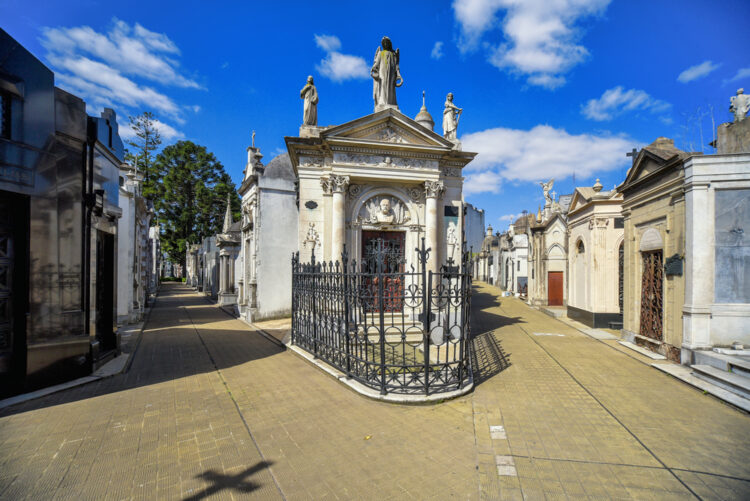Recoleta Cemetery in Buenos Aires, Argentina, is not only a place of rest for the deceased but also an important cultural attraction in the city. Cementerio de la Recoleta in Spanish, is a famous burial ground located in the heart of Buenos Aires. The cemetery has a rich history and is considered one of the most beautiful and important cemeteries in the world.
Recoleta Cemetery was first opened in 1822. At the time, the cemetery was located outside the city limits of Buenos Aires, but as the city grew, the cemetery became a part of the city center. The cemetery covers an area 13.5 acres and contains over 6,400 graves, statues, sarcophagi, coffins, and crypts, with new tombs being added to this already impressive collection every year.
Visitors regard Recoleta Cemetery as possessing both fascination and reverence. The elaborate tombs and monuments found here are a testament to the wealth and power of the people who are buried. Many of the graves and tombs date back to the 19th century when Buenos Aires was one of the wealthiest cities in the world.
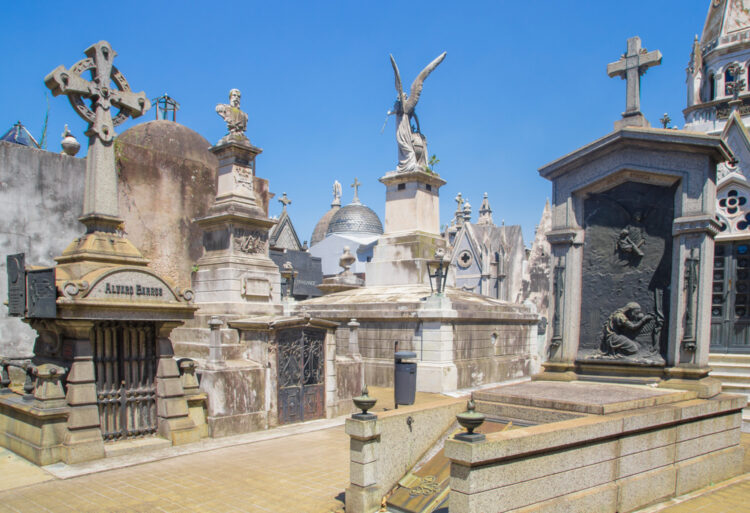 The cemetery is home to towering marble mausoleums rich in Art Deco, Art Nouveau, baroque, and neo-gothic architectural styles. The tombs and monuments are incredibly ornate, and many are decorated with intricate carvings and sculptures. The cemetery is designed in a grid pattern, with narrow walkways winding between the tombs and monuments. The walkways are lined with tall trees that provide shade and give the cemetery a peaceful and serene atmosphere. The tombs and monuments are arranged in rows, each different from the next. Some are simple and understated, while others are grand and imposing.
The cemetery is home to towering marble mausoleums rich in Art Deco, Art Nouveau, baroque, and neo-gothic architectural styles. The tombs and monuments are incredibly ornate, and many are decorated with intricate carvings and sculptures. The cemetery is designed in a grid pattern, with narrow walkways winding between the tombs and monuments. The walkways are lined with tall trees that provide shade and give the cemetery a peaceful and serene atmosphere. The tombs and monuments are arranged in rows, each different from the next. Some are simple and understated, while others are grand and imposing.
One of the most striking aspects of the Recoleta Cemetery is the sheer number of tombs and monuments crammed into its relatively small space. The tombs range in size from small, simple graves to towering, multi-story mausoleums. Some tombs are decorated with beautiful stained-glass windows, while others are adorned with sculptures and carvings. Many of the tombs have been in the same family for generations, and some are still maintained by their descendants today.
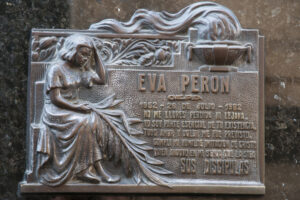 One of the most impressive tombs in the Recoleta Cemetery is the tomb of Eva Perón, known as “Evita”, who was the First Lady of Argentina from 1946 until she died in 1952. Her tomb is located in the Duarte family mausoleum, and it is one of the most visited tombs in the cemetery. The tomb is adorned with flowers and messages from her admirers, evidence of her enduring legacy and impact on the people of Argentina.
One of the most impressive tombs in the Recoleta Cemetery is the tomb of Eva Perón, known as “Evita”, who was the First Lady of Argentina from 1946 until she died in 1952. Her tomb is located in the Duarte family mausoleum, and it is one of the most visited tombs in the cemetery. The tomb is adorned with flowers and messages from her admirers, evidence of her enduring legacy and impact on the people of Argentina.
Another notable tomb in the Recoleta Cemetery is the tomb of Rufina Cambaceres, a young woman who died in 1902 at 19. Her tomb is a masterpiece of Art Nouveau architecture, and it is decorated with intricate carvings and sculptures that depict the story of her life. The tomb has become a symbol of the tragic and mysterious death of Rufina, and it is one of the most photographed tombs in the cemetery.
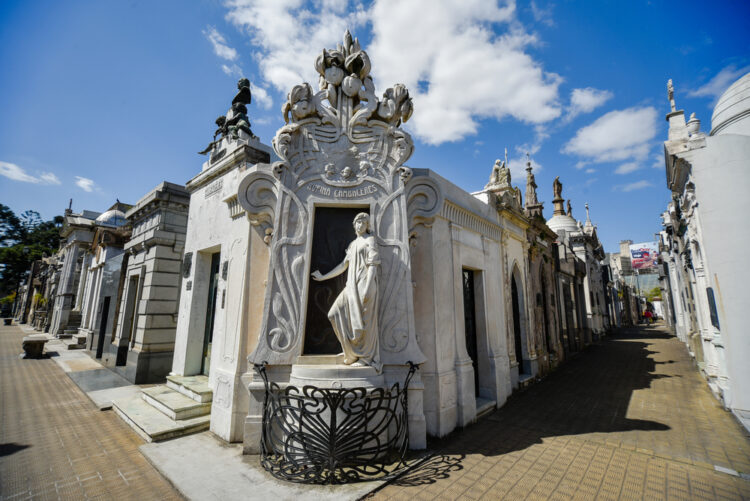
Other notable people buried in the Recoleta Cemetery include Argentine presidents, military leaders, Nobel Prize winners, and famous artists and writers. These include former president Domingo Faustino Sarmiento, who is considered to be the father of public education in Argentina, and writer Adolfo Bioy Casares, who was a close friend of Jorge Luis Borges.
In addition to its famous tombs and monuments, the Recoleta Cemetery is also home to a number of chapels and other buildings of historical significance. The cemetery’s main chapel, the Capilla de la Inmaculada Concepción, was built in 1827 and is one of the oldest buildings in Buenos Aires. The chapel is located at the entrance to the cemetery and is decorated with beautiful frescoes and stained-glass windows. The Cemetery Museum, located in the former residence of the cemetery’s director, houses a collection of historical artifacts and documents related to the cemetery, as well as exhibits on the history of Buenos Aires.
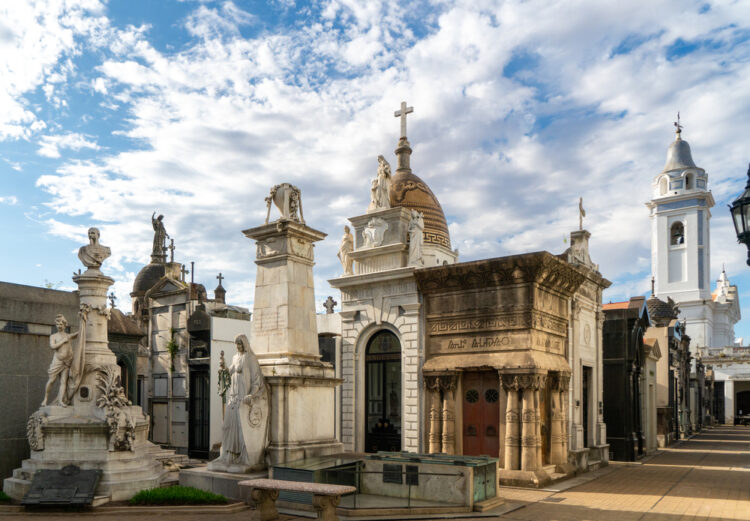
Many visitors to the cemetery come to pay their respects to loved ones buried there or to reflect on the fragility of life and the inevitability of death. The cemetery’s peaceful atmosphere and serene beauty make it a place of quiet contemplation and reflection, a testament to the resilience and endurance of the human spirit. The cemetery is open to the public every day of the year, and guided tours are available for those who want to learn more about its history and architecture. Visitors to the cemetery are asked to be respectful and quiet and to avoid touching or climbing on the tombs and monuments.


